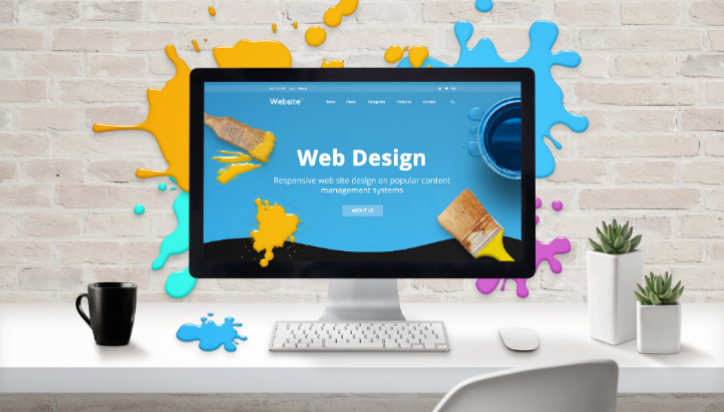
10 Common Web Design Mistakes and How to Avoid Them in 2023
Are you in the process of designing a website? Whether you’re a seasoned web designer or a novice in the field, it’s important to be aware of the common web design mistakes that can hinder the success of your website.
In this article, we’ll explore ten prevalent web design mistakes that designers often make and provide you with valuable tips on how to avoid them in 2023.
Let’s dive in!
What are the most common mistakes?
In today’s digital age, websites play a vital role in the success of businesses and organisations. With millions of websites competing for attention, it’s crucial to ensure that your website stands out from the crowd.
However, many web designers, even the most experienced ones, make common mistakes that can undermine the effectiveness of their websites. By being aware of these mistakes and taking proactive measures to avoid them, you can create a website that captivates your audience and achieves your desired goals.
A well-designed website can make a great first impression, enhance brand identity, improve mobile responsiveness, boost SEO rankings, and ultimately attract more visitors and potential customers. However, a poorly designed website will do the exact opposite and damage your website and brand image.
With that, let’s get into the most common mistakes of web design.
1. Failing to set clear goals
One of the biggest mistakes web designers make is not setting clear goals for their websites. Without clear objectives in mind, it’s easy to get lost in the design process and lose sight of what you want to achieve.
For example, a web designer might focus solely on creating an aesthetically pleasing website without defining its primary purpose. As a result, visitors may struggle to understand what the website is about or what actions they should take, leading to high bounce rates and lower conversions.
Before you start designing, take the time to define your website’s purpose, target audience, and desired actions you want visitors to take. Establishing clear goals will guide your design decisions and help you create a website that aligns with your business’s needs.
2. Neglecting user experience
In the pursuit of creating visually stunning websites, designers often overlook the importance of user experience. User experience should always be a top priority, as it directly affects how visitors interact with your website.
An example of neglecting user experience is designing a website with a complex structure and a cluttered layout. Visitors may find it challenging to locate essential information or products, leading to frustration and a negative impression of the brand.
Ensure that your website is easy to navigate, with intuitive menus, clear labels, and organised content. Incorporate visual cues and responsive design to guide users on their journey and make their experience enjoyable and seamless across all devices.
3. Lack of clear and consistent navigation
A website with confusing or inconsistent navigation can frustrate visitors and drive them away. Your website’s navigation should be clear, intuitive, and consistent across all pages. Use a simple menu structure, clearly labelled buttons, and a visible navigation bar.
An example of this mistake is when a website has inconsistent labelling for navigation buttons or uses obscure icons that are not immediately understandable. This lack of clarity can confuse visitors, making it difficult for them to navigate through the website and find the content they need.
Consider hierarchical categorisation for websites with multiple pages, allowing users to navigate through different sections easily. Additionally, implement intuitive redirects to save users from the hassle of searching for specific pages.
4. Creating a cluttered design
In an attempt to showcase everything at once, web designers often fall into the trap of creating cluttered designs. Too many elements on a page can overwhelm visitors and make it difficult for them to find the information they’re seeking. Embrace minimalistic design principles and focus on essential elements.
For instance, a web designer might overcrowd the homepage with excessive images, banners, and text, making it overwhelming for visitors to focus on the essential aspects of the website. This cluttered design can also slow down the loading speed, leading to a poor user experience.
Use whitespace effectively, break up content into digestible chunks, and optimise images for fast loading times. A clean and uncluttered design will create a visually appealing and user-friendly website.
5. Poor readability
Readability plays a crucial role in engaging website visitors. If your content is difficult to read, visitors may lose interest and leave your site. Ensure that your font size is large enough, select a font that is easy to read, and choose a colour scheme that provides good contrast between the text and background.
An example of poor readability is using a fancy font with a small size and low contrast against the background colour. Visitors may strain their eyes to read the content, causing them to leave the site in search of a more readable alternative.
Stick to standard font sizes, such as 16px or above, and avoid using too many different fonts or distracting colour combinations. A visually pleasing and easily readable website will keep visitors engaged and encourage them to explore further.
6. Ignoring mobile responsiveness
With the increasing popularity of mobile devices, neglecting mobile responsiveness is a significant mistake. Your website should adapt seamlessly to different screen sizes and devices.
A common mistake is not testing the website’s responsiveness on different devices. As a result, the website may appear distorted or have overlapping elements when viewed on smartphones or tablets, driving away potential mobile users.
Embrace responsive design techniques to ensure that your website looks and functions flawlessly on smartphones, tablets, and other mobile devices. Test your website across various devices using tools like LT Browser 2.0 to verify its responsiveness and make necessary adjustments for optimal user experience.
7. Slow Page load time
In today’s fast-paced world, users expect websites to load quickly. If your website takes too long to load, visitors may become impatient and abandon it. Optimise your website’s performance by compressing images, minifying code, and leveraging caching techniques.
For instance, a web designer may neglect to optimise image sizes or neglect caching, resulting in a slow-loading website. This can lead to higher bounce rates as visitors lose patience and abandon the site.
Use a reliable hosting provider with fast server response times. By prioritising speed, you can provide a seamless browsing experience that keeps visitors engaged and encourages them to stay on your site.
8. Not optimising for SEO
A beautiful website is useless if it doesn’t rank well in search engine results. Ignoring SEO optimisation is a common mistake that can hinder your website’s visibility and organic traffic.
An example of this mistake is not using relevant keywords in the website’s content and meta tags. As a consequence, the website may not rank well in search engine results, resulting in lower organic traffic and missed opportunities for reaching the target audience.
Conduct keyword research and incorporate relevant keywords into your website’s content, meta tags, and headings. You can create content in bulk with AI article generators to give yourself a head-start in SEO.
Optimise your images with descriptive alt text, create unique and compelling meta descriptions, and build high-quality backlinks to improve your website’s SEO performance. A well-optimised website will attract more organic traffic and increase your chances of success.
9. Lack of clear call-to-action (CTA)
A common mistake in web design is the absence of clear and compelling call-to-action elements. Your website should guide visitors towards specific actions, such as making a purchase, signing up for a newsletter, or contacting your business.
For example, a website might lack prominent and strategically placed CTAs, making it challenging for visitors to know what action to take next. Eventually, the reader will undoubtedly just move on to their next website, and you will have lost a potential customer.
Failing to include prominent and strategically placed CTAs can result in missed opportunities for conversions. Make sure your CTAs stand out visually, use persuasive language, and lead visitors to take the desired actions.
10. Inconsistent branding and design
Consistency is key when it comes to branding and design. Inconsistent use of colours, fonts, imagery, and overall style can create confusion and make your website appear unprofessional.
One common example of this would be having different website colours from your brand’s identity. Imagine having a blue logo with a red website background. It screams inconsistency and will certainly paint your brand in a negative light.
Ensure that your website design aligns with your brand identity, maintaining a consistent colour scheme, tone of voice, and styling all throughout. Any mistake here will come across as extremely jarring and can throw potential customers off.
Conclusion
Designing a successful website requires careful attention to detail and a relentless focus on user experience. By avoiding the common web design mistakes mentioned in this article, you can prevent potential pitfalls and create a website that not only looks visually appealing but also provides a seamless user experience.
Remember, a well-optimised website, free from these design mistakes, will attract more organic traffic and increase your chances of achieving your desired objectives.
You read a lot. We like that
Want to take your online business to the next level? Get the tips and insights that matter.


